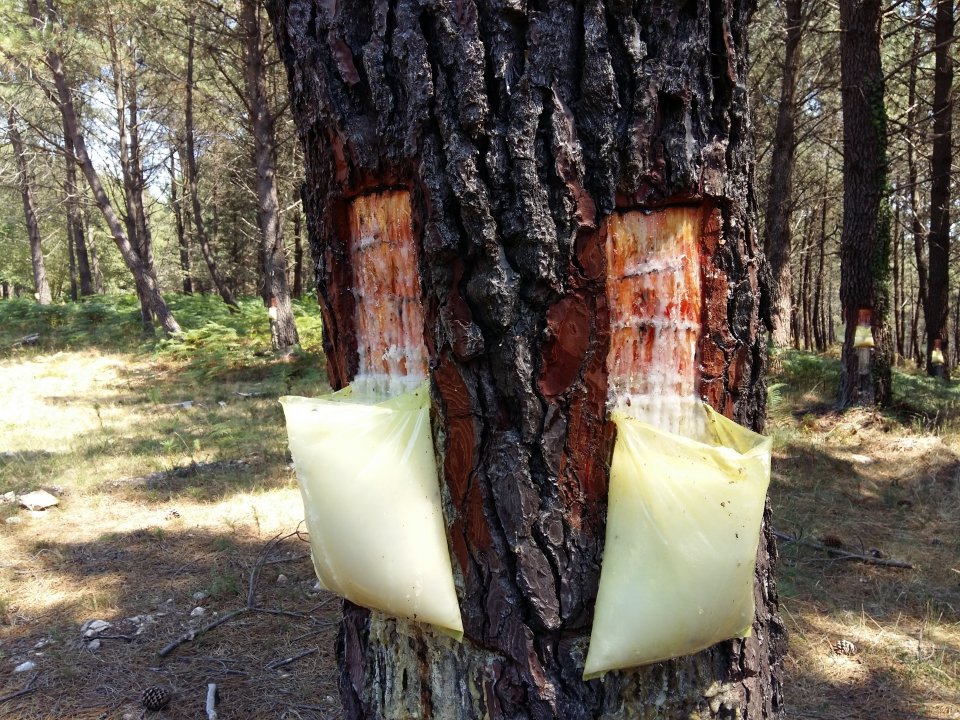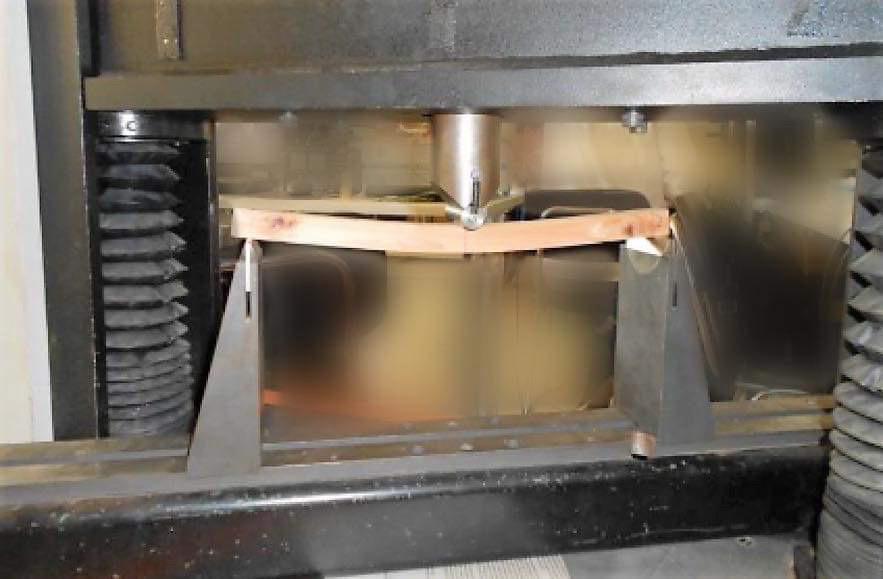
Assess how resin tapping can induce changes in the physical, chemical, and mechanical wood properties of the trees, thus conditioning its technological suitability for certain uses and, consequently, its commercial value.
Resin tapping is an important activity to increase the profitability of pine forests as it constitutes an annual income. It contributes to job creation in depressed rural areas and compels the management of pine forests, reducing the impact of fires.
At the wood level, this activity exploits the most commercially valuable part of the stem. Thus, a question arising is whether resin tapping changes the characteristics of wood and if those changes imply any limitations to its use, devaluing it. One way of answering this question consists in comparing the anatomical, physical, chemical, and mechanical characteristics of wood from resin tapped and non-tapped trees.
a) Resin tapping does not induce significant anatomical changes in the width of the growth ring and in the resin channel area.
b) There is a significant increase in the number of resin channels in the resin tapped trees after the first year of resin tapping.
c) Resin tapped trees had higher wood density, especially on the incision side. No significant differences were observed for the other physical properties.
d) The wood of resin tapped trees has a greater capacity for elastic deformation on the incision side.
e) The wood of resin tapped trees is less rigid and brittle, withstanding higher stress at the maximum load point on the incision side.
f) The wood from resin tapped trees has a higher resin content in the lower trunk.
Given the main uses of maritime pine wood and the expected technological performance of this wood, resin extraction is an activity that should be contemplated in maritime pine forest management plans as it does not interfere with the main characteristics and properties of wood and promotes increased profitability of pine stands.
The higher resin content of resin tapped wood should give it greater resistance to biodegradation.
The wood of resin tapped trees can have greater problems in solid wood transformation processes such as drying and the surface finishing of planks. However, for the production of panels or paper, no problems arise from the use of this wood.
The demonstration of the low impact of resin tapping on wood quality should contribute to the end of the commercial devaluation of resin tapped trees. Incorporating resin tapping into the management of pine stands contributes to increased financial profitability of pine stands by providing an annual income to the owner that can be used to improve the management of pine stands.
Increasing silviculture practices in the management of pine forests, such as the biomass reduction required for the resin tapping activity, should have consequences for reducing the impact of rural fires.
a) Establishment of permanent plots, enabling the experimentation of new resin tapping practices and methodologies and the integrated assessment of all factors affecting resin production, will allow a better understanding of the physiological process of resin production in the tree and, thus, contribute to for the development of new practices, new technologies and new legislation on resins.
b) Further development of studies on the genetic characterization of resin production, aiming to produce improved plants for this purpose.
Maria Emília Silva, emil_ms@utad.pt
Carlos Loureiro, carlos.a.r.loureiro@gmail.com
Jani Pires, janipires@gmail.com
Further information
Silva ME, Loureiro C, Gaspar MJ, Pires J, Ribeiro M, Loureiro C, Coutinho JP, Santos E, Carvalho A, Brito JL, Salgueiro A, Lousada JL, 2018. RESIMPROVE - Desenvolvimento de processos de produção e extração de resina de pinheiro para a melhoria da eficiência, racionalização e expansão da atividade. ISBN 978-989-704-264-5
E.Silva

Mechanical tests on wood samples from resin tapped trees. Credit: C.Gonçalves
